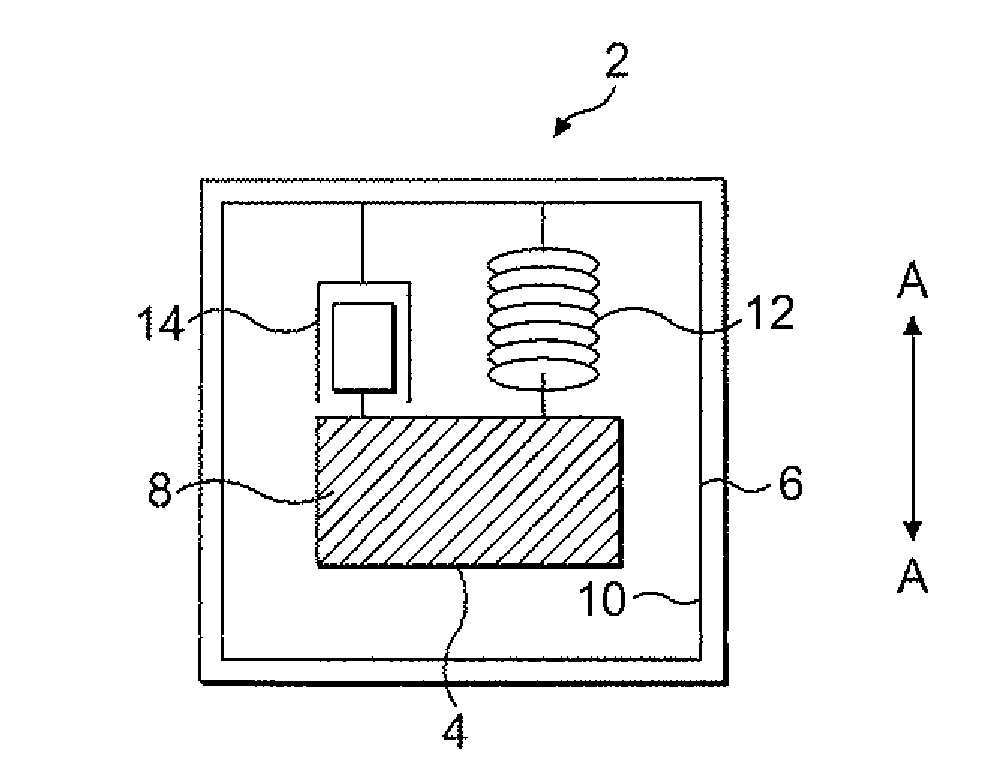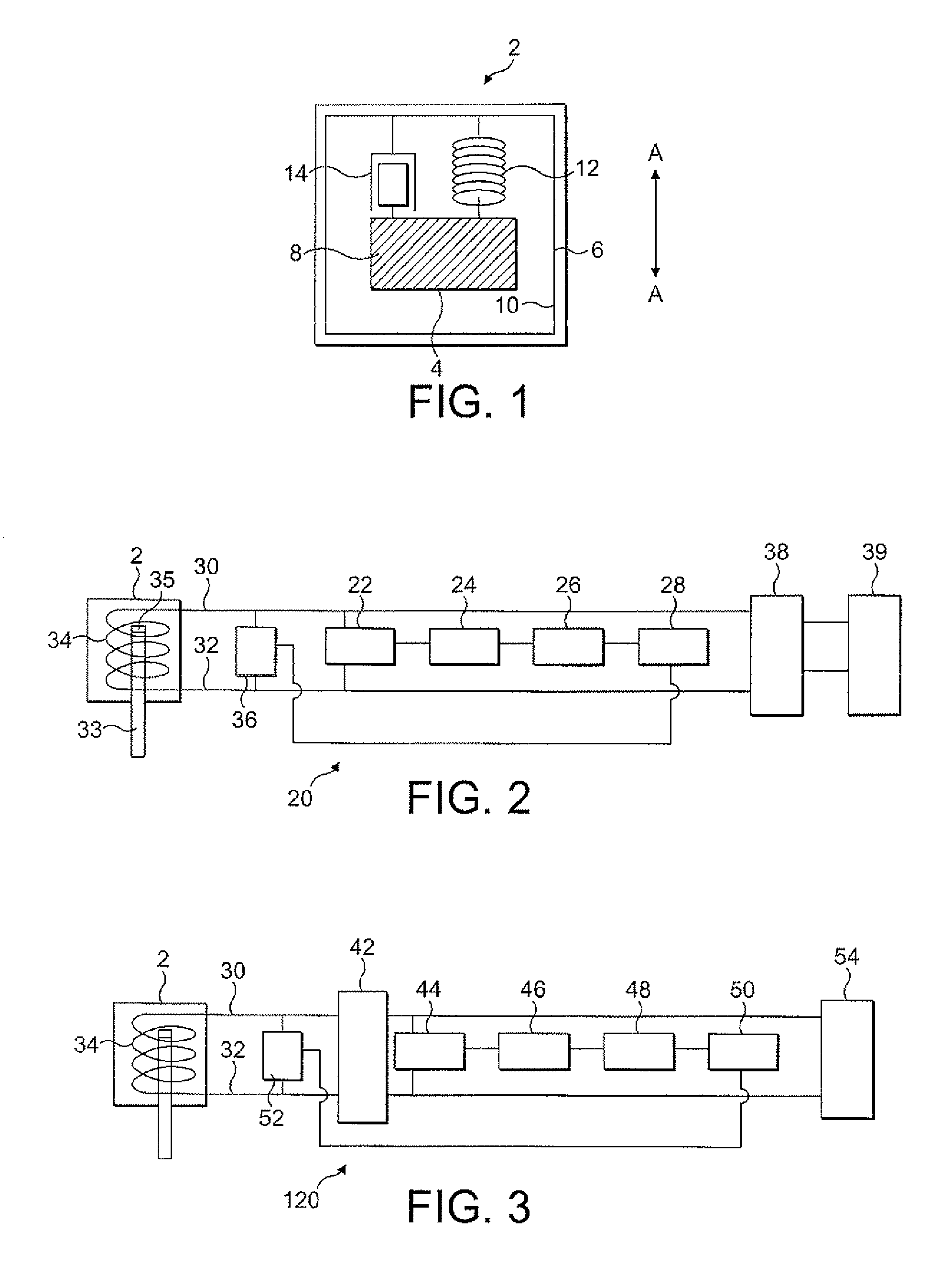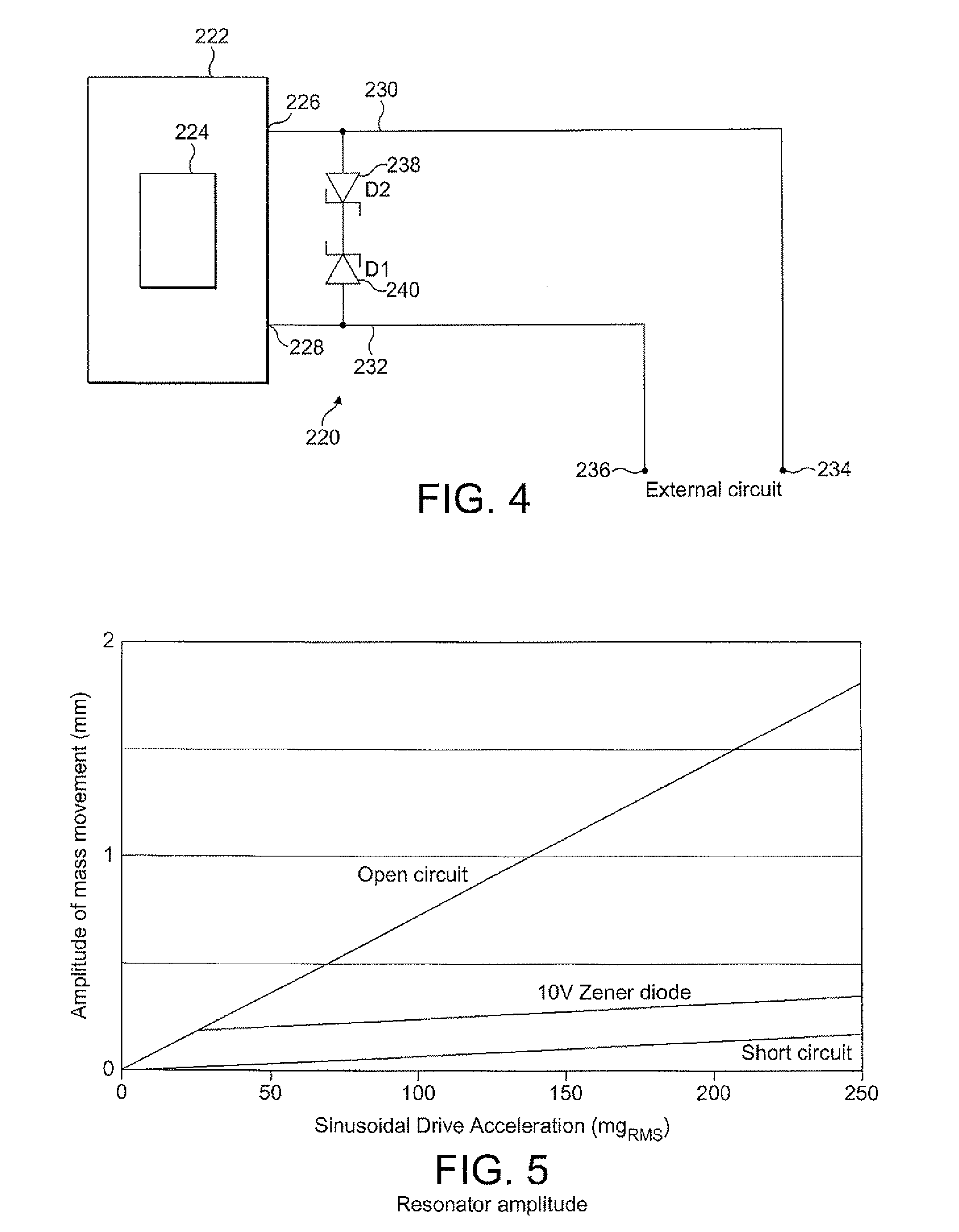Electromechanical generator for, and method of, converting mechanical vibrational energy into electrical energy
a generator and electric motor technology, applied in the field of electric motors, can solve the problems of inability to accurately predict the resonant frequency or optimal damping factor, inability to ensure that the practical operating conditions correspond to the theoretical ideal, and the actual power output is unlikely to be optimised for the specific application, so as to reduce the possibility of damage and enhance the effect of operating li
- Summary
- Abstract
- Description
- Claims
- Application Information
AI Technical Summary
Benefits of technology
Problems solved by technology
Method used
Image
Examples
first embodiment
[0057]FIG. 2 is a schematic block diagram of an electromechanical generator 20 in accordance with the present invention.
[0058] The electromechanical generator 20 comprises the electromechanical device 2 for converting mechanical vibrational energy into electrical energy as described above with reference to FIG. 1. A detector 22 is connected to the electrical output of the electromechanical device 2, in this embodiment comprising the terminals 30, 32 of at least one coil 34, the coil 34 mounted relative to a cantilever beam 33 carrying at least one magnet 35. The detector 22 is adapted to detect the output voltage (Vout) and the output current (Iout) produced by the electromechanical device 2. An EMF calculator 24 is connected to the detector 22 and is adapted to calculate a quantity representing the output EMF of the transduction element according to the following expression:
EMF=Vout+(Iout*Rtrans)
where Rtrans is the internal impedance of the transduction element (e.g. the coil) o...
second embodiment
[0064]FIG. 3 is a schematic block diagram of an electromechanical generator 120 in accordance with the present invention.
[0065] The second embodiment is modified as compared to the first embodiment by detecting rectified DC voltage and current from the AC / DC rectifier which is connected to the electrical output of the electromechanical device 2, in this embodiment the output terminals of the coil. Accordingly, in the second embodiment the electromechanical generator 120 comprises the electromechanical device 2 for converting mechanical vibrational energy into electrical energy as described above with reference to FIG. 1. An AC / DC rectifier 42 is connected to the output terminals 30, 32 of the coil 34. A detector 44 is connected to the electrical output of the rectifier 42 and is adapted to detect the output DC voltage and the output DC current produced by the rectifier 42. An EMF calculator 46 is connected to the detector 44 and is adapted to calculate a quantity representing the co...
third embodiment
[0071] an electromechanical generator in accordance with the present invention is shown in FIG. 4. The electromechanical generator 220 comprises an electromechanical device 222 having a mass-spring arrangement 224 in the form, for example, of the mass-spring arrangements of any of FIGS. 1 to 3 in which a vibratable mass is adapted to resonate with an oscillation amplitude at a natural frequency. The electromechanical device 222 has an electrical output, which in this embodiment is comprised of two output terminals 226, 228, each having a respective electrical lead 230, 232 connected thereto. In use, the electrical lead 230, 232 are connected by respective connectors 234, 236 to an external electrical circuit to be electrically driven by the electromechanical generator 220.
[0072] Two voltage regulators 238, 240 are connected in parallel across the electrical leads 230, 232. Each voltage regulator 238, 240 is adapted to permit current flow therethrough, at a low impedance, in a respec...
PUM
 Login to View More
Login to View More Abstract
Description
Claims
Application Information
 Login to View More
Login to View More - R&D
- Intellectual Property
- Life Sciences
- Materials
- Tech Scout
- Unparalleled Data Quality
- Higher Quality Content
- 60% Fewer Hallucinations
Browse by: Latest US Patents, China's latest patents, Technical Efficacy Thesaurus, Application Domain, Technology Topic, Popular Technical Reports.
© 2025 PatSnap. All rights reserved.Legal|Privacy policy|Modern Slavery Act Transparency Statement|Sitemap|About US| Contact US: help@patsnap.com



